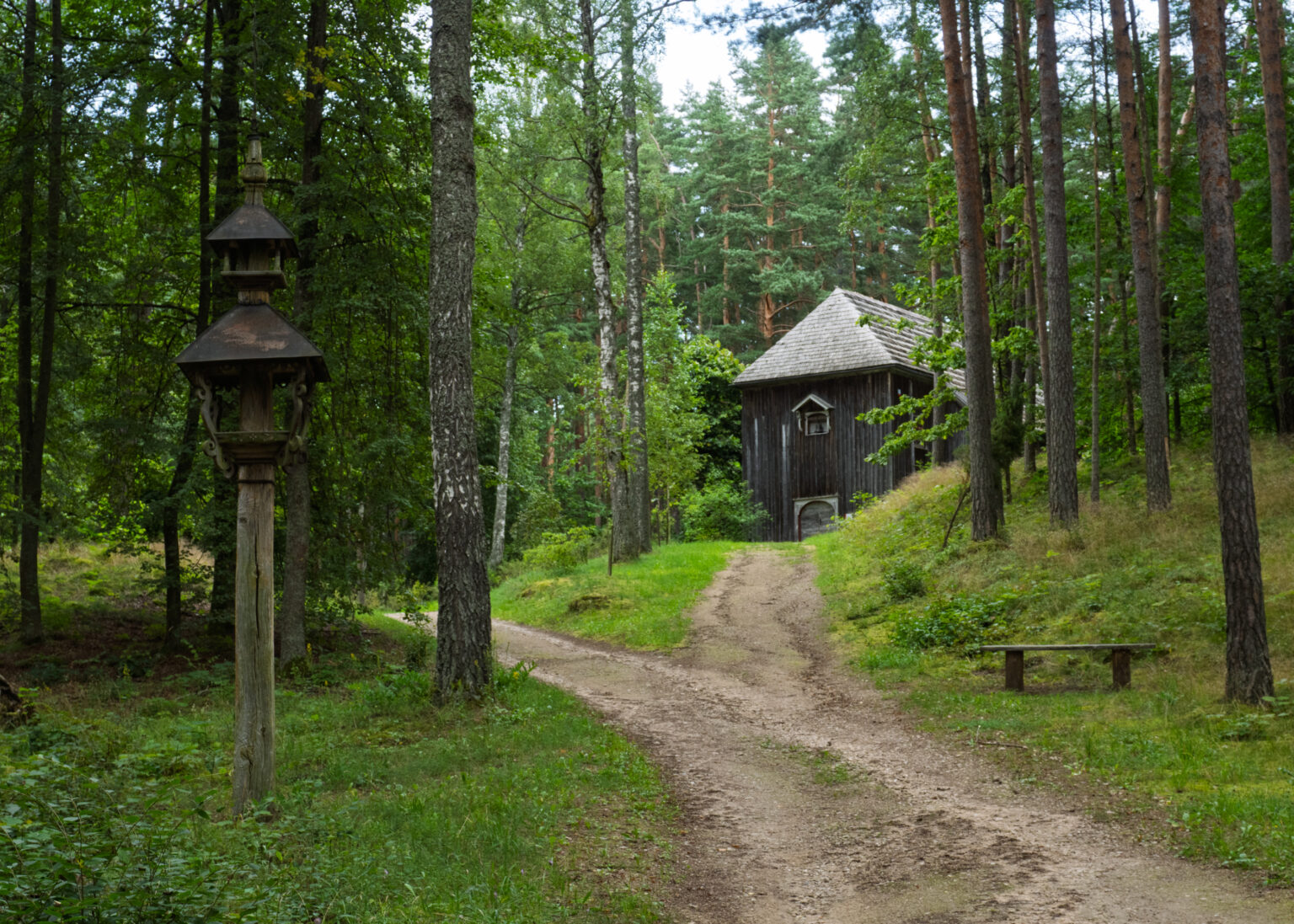What is an open air museum? Neither of us had heard this term while living in the US, but have visited several since beginning our slow travels, and you have likely visited at least one yourself, perhaps on a school field trip. The first time we heard these words was when visiting Göreme, in Capadocia, Turkey. The open air museum there allowed you to explore hand dug caves used for sleeping, cooking, and studying by early Christian monks and nuns. Here in Riga, Latvia, friends recommended that we visit the Ethnographic Open Air Museum of Latvia.
The museum is on the outskirts of Riga on a plot of forested land along the shore of Lake Jugla. We took the bus from the old town section of Riga where we are staying and it was a simple half-hour ride with a short walk on either end. Admission was eight euros each, with discounts available for seniors, children, etc.
There are homes, barns, work sheds, churches of different denominations, a pub, smithy, and several windmills. Most of the buildings had small plaques outside explaining their functions and history in Latvian and English. A few of the buildings were open to walk through and see the kind of furnishings and tools that would be found there in the past, as well as a docent in period clothing available to answer questions. I believe that on occasion, such as fall harvest time or summer solstice, there are folklore events held here and perhaps more of the buildings are open with demonstrations given (blacksmiths, cooking, etc.)
It is an interesting place to visit to see a bit of Latvian historical agrarian life, as well as to enjoy some nature and a quiet walk outdoors so close to the city. There are a few picnic tables scattered throughout the park if you’d like to pack a lunch, though there is also a restaurant near the entrance. There are also toilets and outhouses at a few locations. Be prepared for changes in weather with jackets and umbrellas since it is outdoors!


